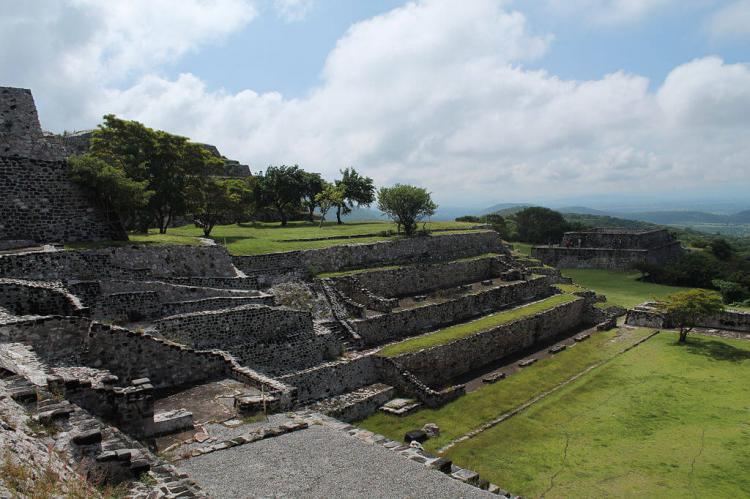Xochicalco: Pre-Columbian Archaeological Site (Mexico)
Xochicalco, a pre-Columbian archaeological site, is an exceptionally well-preserved example of a fortified political, religious and commercial center from the troubled period of 650 to 900 A.D. that followed the breakup of the great Mesoamerican states such as Monte Albán, Palenque, and Tikal.
Xochicalco
Pre-Columbian Archaeological Site
Nestled in the western part of Morelos, Mexico, Xochicalco is a testament to Mesoamerican history. Recognized by UNESCO, this pre-Columbian archaeological site, founded around 650 A.D. by the Olmeca-Xicallanca, unfolds a compelling narrative of a city-state strategically positioned along major trade routes. In the troubled period of 650 - 900 A.D., as Teotihuacán's influence waned and the Mesoamerican Classic Period came to an end, Xochicalco emerged as a well-preserved enclave of pre-Columbian ceremonial centers and residential structures, offering insights into the dynamics of the Epiclassic Period.
Historical Context
The Epiclassic Period (ca. 650-900 A.D.) ushered in an era of political instability, commercial competition, and migration, marking the decline of prominent Classic capitals such as Teotihuacán, Monte Albán, Palenque, La Quemada, and Tikal. Xochicalco, established by a confederation of settlements in the region now comprising the states of Guerrero, México, and western Morelos, became a beacon of resilience and innovation during this tumultuous time.
Strategic Foundation
Founded by the Olmeca-Xicallanca, a Mayan group of traders from Campeche, Xochicalco's establishment in the second half of the 7th century A.D. was not arbitrary. The city's location afforded it a strategic position along major Mesoamerican trade routes, facilitating commerce and cultural exchange. With a population ranging from 10,000 to 15,000, Xochicalco became a bustling center of craft production and long-distance trade.
Architectural Landscape
Xochicalco's architectural landscape is a marvel, reflecting influences from the Central Highlands, the Gulf Coast, and the Maya region. The city's layout, consisting of terracing, massive retaining walls, platforms, and pyramidal structures, illustrates the engineering prowess of its inhabitants. The town is a supreme example of an Epiclassic fortified city, emphasizing the significance of military infrastructure in times of political turmoil.
Three Distinct Levels
Three distinct levels define the city's topography—the lower level, enclosed by defensive walls, houses primarily residential structures. The intermediate level, known as the 'Market Ensemble,' features the Plaza of the Stele of the Two Glyphs, residential buildings, and the largest ball court at Xochicalco. Beyond the ball court lies the Palace, a complex comprising residential rooms, kitchens, workshops, storerooms, and a temazcal (steam bath) arranged around patios. The highest level encompasses temples and monumental buildings, likely reserved for the ruling class, clustered around the Main Plaza.
Pyramid of the Plumed Serpents and Acropolis
At the heart of Xochicalco's Main Plaza lies the Pyramid of the Plumed Serpents, a remarkable structure with high-relief sculptures depicting enormous plumed serpents and seated figures, interpreted as priests, rulers, and astronomers. This architectural gem showcases a fusion of cultural influences and the city's intricate religious and political dynamics. The Acropolis, situated on a 6 m (20 ft) high platform west of the Main Plaza, comprises buildings around a central patio, contributing to the city's grandeur.
Infrastructure and Abandonment
Xochicalco's advanced infrastructure is evident in its water system, including a large rainwater cistern and caves initially used for quarrying and later modified as an observatory. However, despite its grandeur, Xochicalco faced an abrupt end in the late 9th century A.D., as the city was sacked, leading to its abandonment.
Legacy and Cultural Significance
Xochicalco, recognized as a World Heritage Site, stands as a tangible legacy of the Epiclassic Period, offering a window into the complexities of Mesoamerican society during a transformative era. Its fortified design, diverse cultural influences, and rapid construction showcase the resilience and adaptability of its inhabitants. Xochicalco's archaeological riches continue to unveil the mysteries of the past, contributing to our understanding of the intricate history of Mesoamerica.



